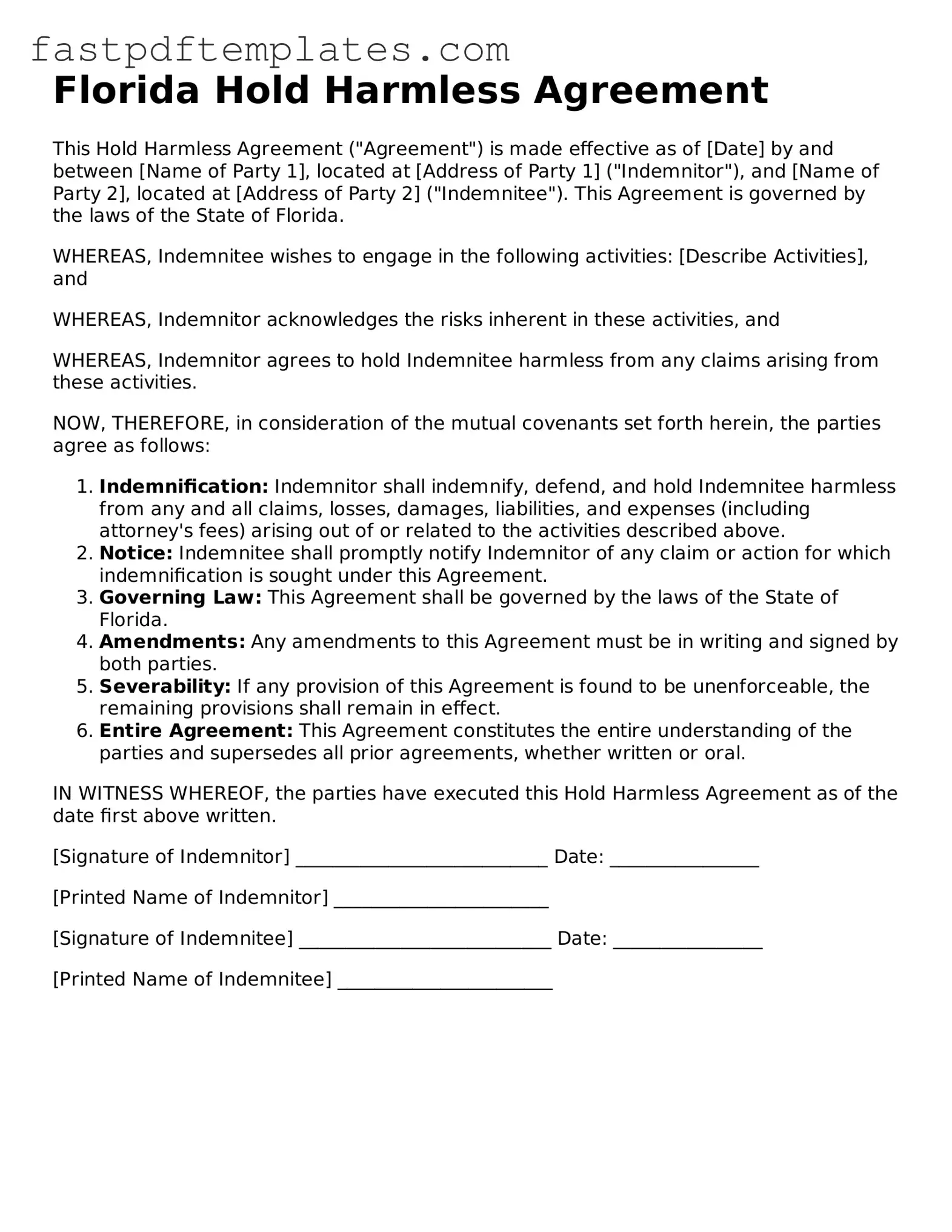Florida Hold Harmless Agreement
This Hold Harmless Agreement ("Agreement") is made effective as of [Date] by and between [Name of Party 1], located at [Address of Party 1] ("Indemnitor"), and [Name of Party 2], located at [Address of Party 2] ("Indemnitee"). This Agreement is governed by the laws of the State of Florida.
WHEREAS, Indemnitee wishes to engage in the following activities: [Describe Activities], and
WHEREAS, Indemnitor acknowledges the risks inherent in these activities, and
WHEREAS, Indemnitor agrees to hold Indemnitee harmless from any claims arising from these activities.
NOW, THEREFORE, in consideration of the mutual covenants set forth herein, the parties agree as follows:
- Indemnification: Indemnitor shall indemnify, defend, and hold Indemnitee harmless from any and all claims, losses, damages, liabilities, and expenses (including attorney's fees) arising out of or related to the activities described above.
- Notice: Indemnitee shall promptly notify Indemnitor of any claim or action for which indemnification is sought under this Agreement.
- Governing Law: This Agreement shall be governed by the laws of the State of Florida.
- Amendments: Any amendments to this Agreement must be in writing and signed by both parties.
- Severability: If any provision of this Agreement is found to be unenforceable, the remaining provisions shall remain in effect.
- Entire Agreement: This Agreement constitutes the entire understanding of the parties and supersedes all prior agreements, whether written or oral.
IN WITNESS WHEREOF, the parties have executed this Hold Harmless Agreement as of the date first above written.
[Signature of Indemnitor] ___________________________ Date: ________________
[Printed Name of Indemnitor] _______________________
[Signature of Indemnitee] ___________________________ Date: ________________
[Printed Name of Indemnitee] _______________________
